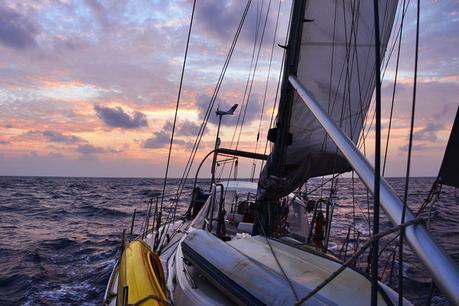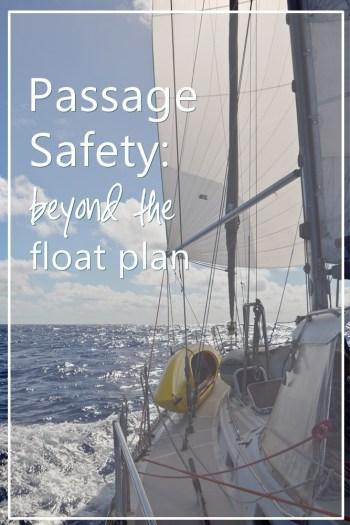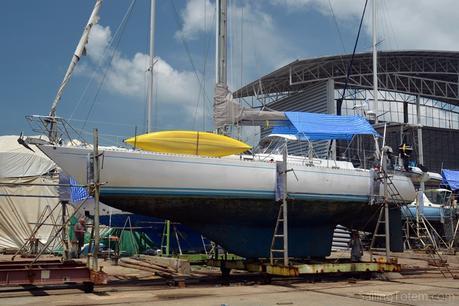
Writing a float plan is a simple thing to do, may be critical in the event of an emergency, and is all too easily set aside and left undone in the stack of tasks that precede going offshore. Provisioning. Checking the weather. Vessel integrity checks. Checking the weather again.
What and why

The bare minimum of a float plan is providing someone you know with basic information about your vessel, passengers, destination, timeline for departure and return, and contact information. That’s it. The USCG doesn’t take float plans; this is for someone you know and trust. If you don’t arrive within an expected timeframe, they’re tasked with notifying the Coast Guard if you do not meet your timeline to return.
Why do you need one? This is boating safety 101. It should not be lost in the false hubris of pride in self-sufficiency. If you don’t think you need one, consider friends/family at home who will suffer if you decide to skip this simple step and the unthinkable happens. A float plan includes the critical details that fall through the cracks of what you think they know…but might not.
Use your EPIRB registration
In addition to providing a float plan to trusted individuals, use your EPIRB registration to capture details. The registration form has an exceptionally important field – “Additional Information”. This free-form field is not required, but is a great place to share any other details which might possibly be helpful for SAR agencies in the event of an emergency.
We use it first to provide the email addresses for our emergency contacts, since the form only takes telephone numbers, and the link to a Dropbox folder that contains copies of our float plan, photos of Totem in and out of the water, and other information which could be useful in an emergency.
Back in Malaysia in late 2014, I got in touch with one of our designated contacts to confirm they’d be on point for our float plan and share details of our voyage. In the process I was asked a very reasonable question by our friend Dan: “so if they call me – what do I have to do?” This shouldn’t have pulled me up short, but for a moment, it did. We are so accustomed to considering emergency scenarios from our perspective, and not the shore side view, that I had not truly thought through about how to prepare those back at home. What should they expect to happen, if our EPIRB is triggered? What information did I need to make sure they had available?
Beyond the float plan: what we do on Totem
We create a detailed document that goes beyond the basics of a float plan.
This document starts with a crew list including the name, age, and passport numbers of everyone on board. It also includes shore side emergency contacts for any other crew joining our family.
Details about Totem come next: hull type and shape, rig type, color, any unique details that would identify her from the many other white sloops of the world. Having recently hauled, we have photos of Totem out of water showing the keel profile. I don’t want to think about her being identified upside down, but it could prove useful.

Safety gear aboard is listed, from our life raft (make / color / description) and ditch bags (also with visual descriptions). Also included are registration copies for both of our EPIRBs.
If we’re traveling loosely in company with any other boats, those people may have the best information about our location or local conditions. Those boats, their names, and their contact details (including at-sea contacts such as sat phone or radio-based email addresses) are included in the folder, as are the details for any radio nets we take part in.
While I hate to think about it being necessary, copies of paperwork for our health/life insurance and boat insurance and the contact for our insurance agents are included. We also provide a spreadsheet with links, logins and passwords for critical accounts in case the unthinkable happens.

Our last critical step is to provide a clear set of directions for our emergency contacts at home. They’re given our expected arrival time/place, and outside date after which we should be considered overdue. If we haven’t contacted them by the outside date, we provide a list of contacts for them to make. First, to try and reach us at sea (via the Iridium GO). Second, to attempt to reach boats we’re traveling in company with. Finally, to contact the appropriate Coast Guard Rescue Coordination Center. I put numbers and links in the document to make it easy.
Internet age
A related consideration: outside of float plan specifics is worth considering. I’ve seen friends subjected to abuse after disaster struck their families, and news of it hit the general media. To mitigate that, consider nominating a trusted friend to take over any online profiles you maintain in the event of an emergency: login to your blog, Facebook, any other profiles you use. If the unthinkable happens, a friend can shut down your blog to comments, deactive your Facebook profile, or take other steps to spare you the exposure and pain of judgment from the uninformed but righteous anonymous internet.
Templates help: google “Float Plan” for a pile of options. And look at the turquoise water in the picture below, because getting places like that (Hermit Islands, PNG) safely is the end game.
Jamie and I have re-opened our coaching service after a hiatus due to “too busy”! Do you have questions about cruising? Want some help figuring out how to realize the dream, choose the boat, prepare (without going broke!), stay safe, or just better understand what it’s really like? We’re mentoring people to answer those questions. Learn more about how to work with us, or get in touch to get started.


